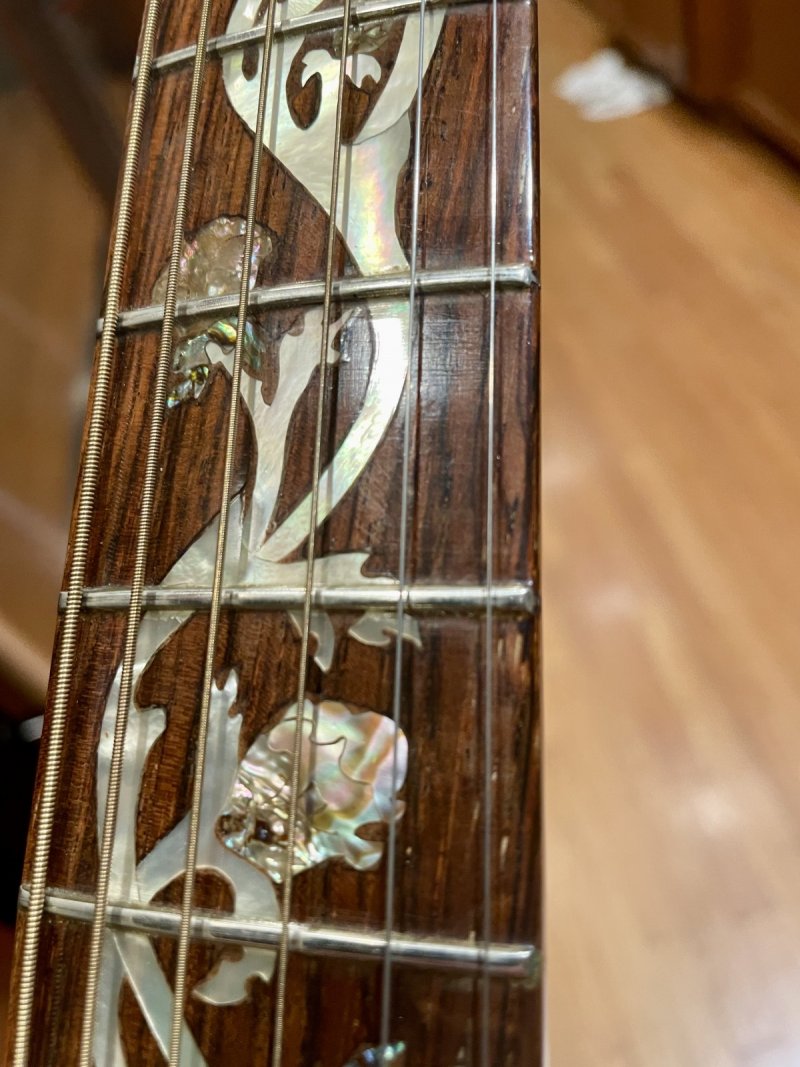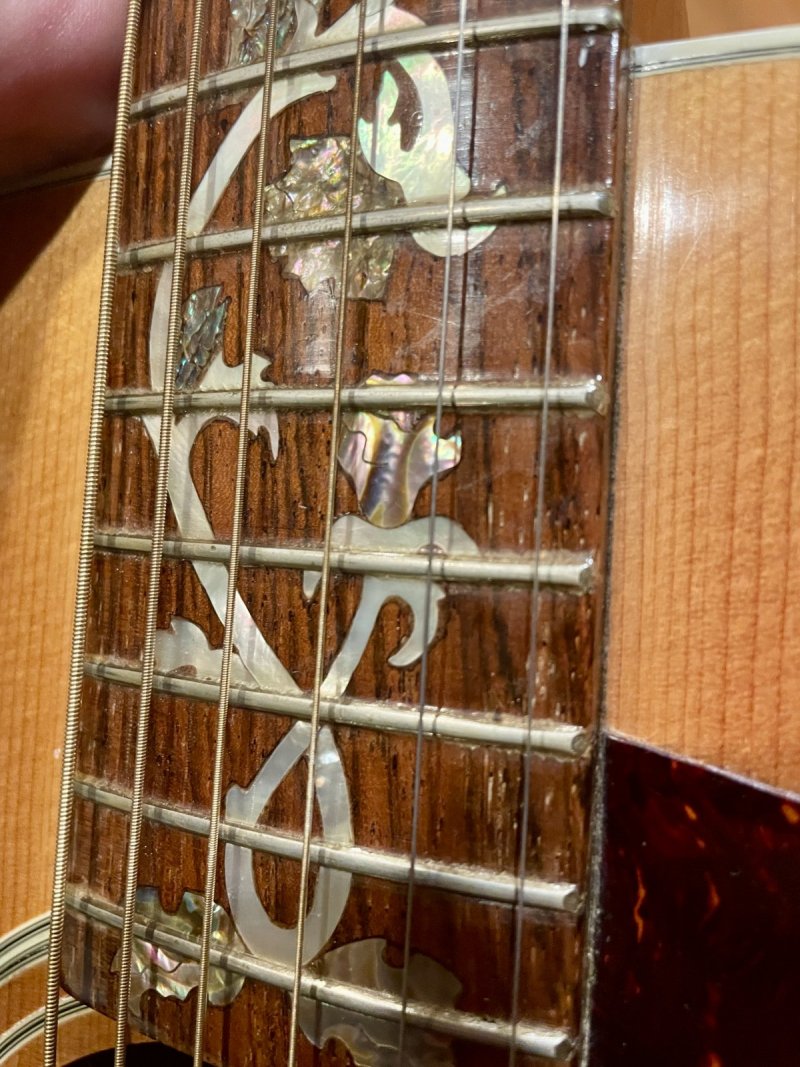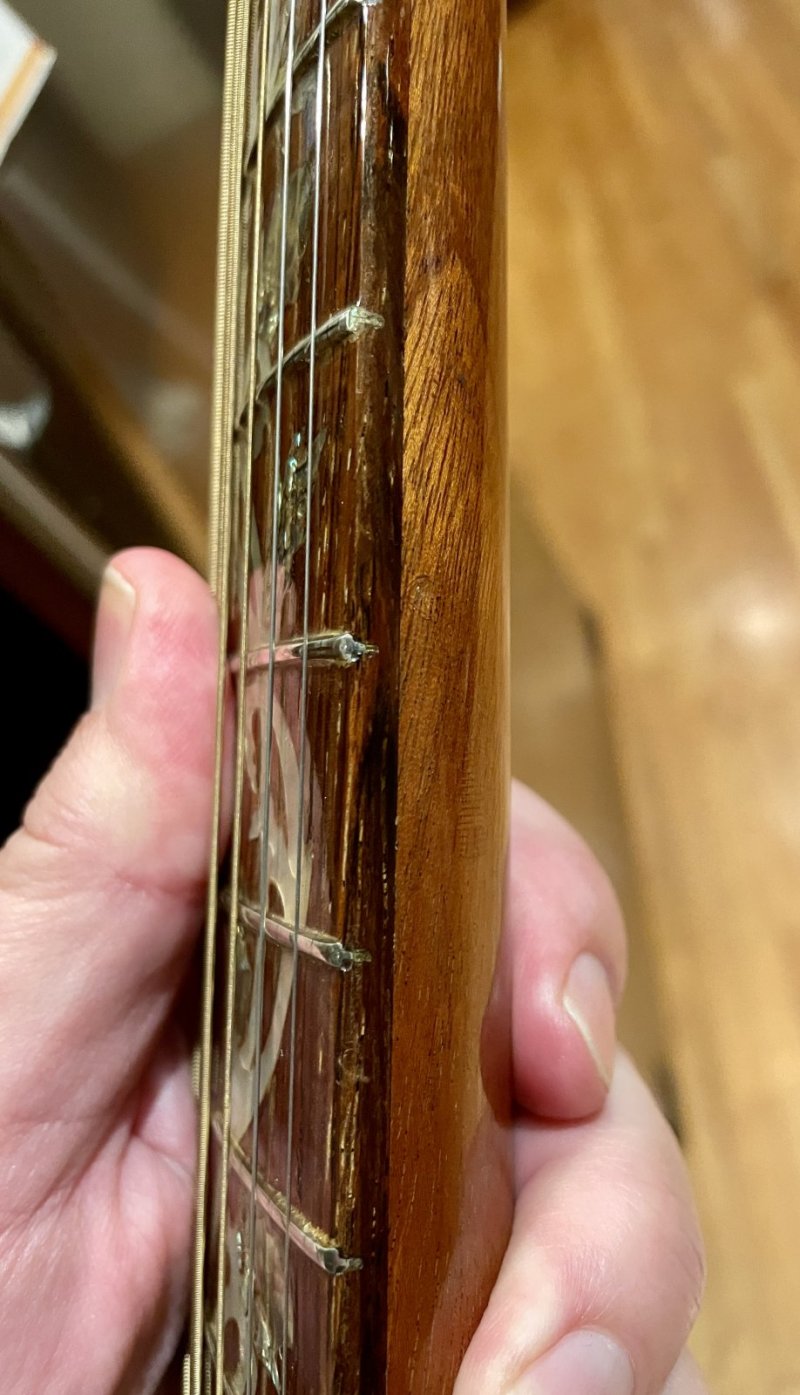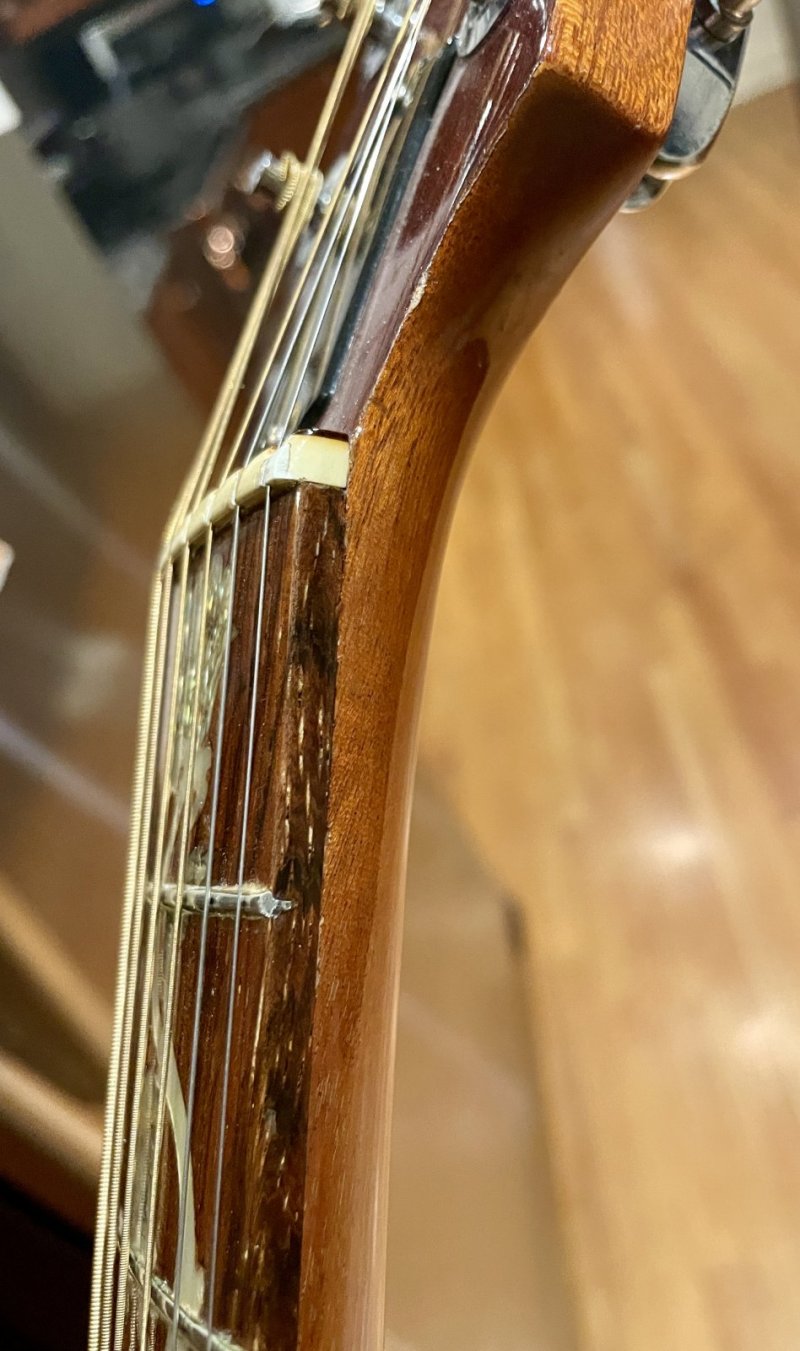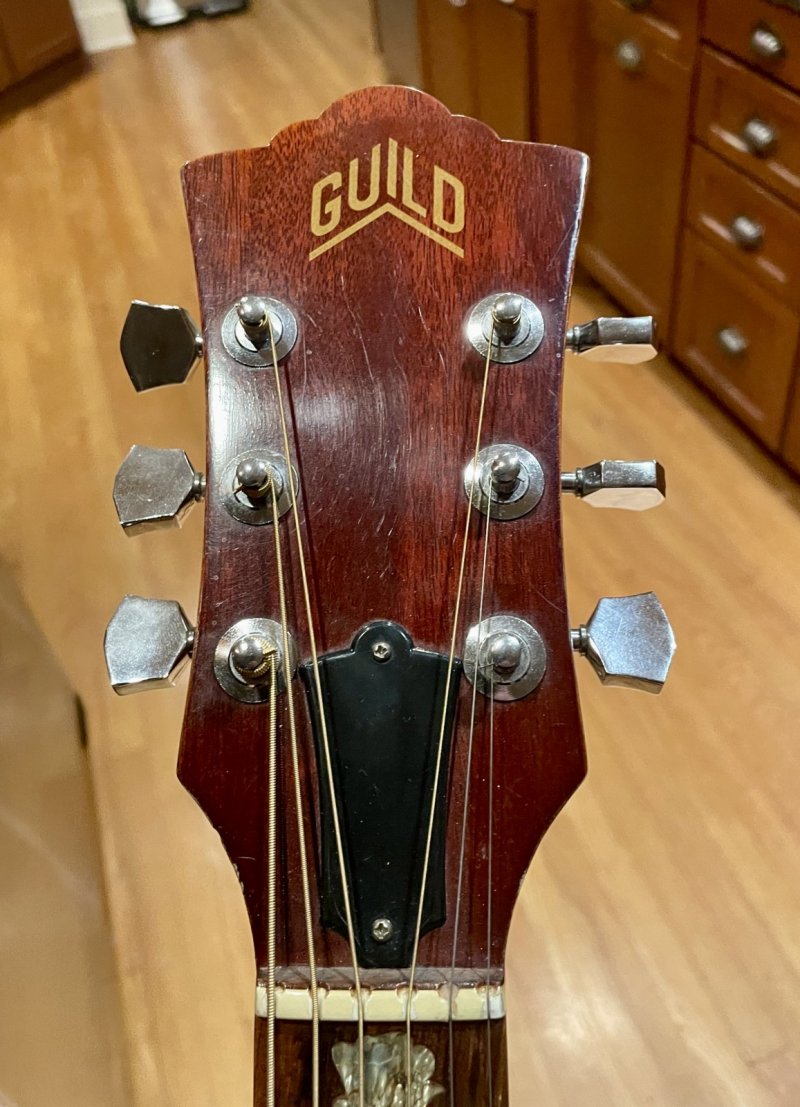This is only speculation, but it's possible that this is an employee guitar. Most of the companies allow their employees to purchase a guitar at factory cost after they have worked for them for at least a year.
While most of those guitars I've seen are pretty standard models, it's quite common to see some custom touches on them that the employee wanted.
The most common custom items are often inlays that are used on either a higher-range model and/or aren't used on the guitar style the employee wants.
When I was there, Gibson Montana was pretty slack on these custom features. As long as the employee paid up front, they could do some things at home, and bring the piece to work where it would be added to the build.
One senior employee was a talented artist and a very skilled woodburner. He was allowed to take guitar tops home and do the
It's entirely possible that an employee who liked to do inlay work at home simply took a blank fretboard home and used a favorite pre-cut set of inlays to set them into the board, which was then fretted and mounted on the neck.
The board could have been completed before the purchase but had to meet approval from a manager before it could be used.
Since this inlay pattern is way, way different from any other Guild, the manager may have allowed it as long as the Guild logo and other standard peghead inlays were left off.
In this case, the manager may have thought he didn't want some other person who saw the guitar order one just like it. That inlay took some major time to do, and an order for another guitar would have really tied up the production when there's only one worker setting inlays into fretboards.
But at the same time, all of the employee guitars were registered and carried the stock label, as they were entirely genuine. And since the buyer did the work on free time, the board didn't add any extra to his cost.
But if he had chosen to use some custom color that had to be custom mixed, that cost would be charged as a factory expense.
Whatever- there are lots of other possibiities. I think the inlay work was superb, and the pattern is tasetful-flashy, but doesn't over-load the guitar. It adds some mystery to a nice old guitar, too.
My initial reaction to it when I saw the photo was recalling a nice Mossman that I once saw at a festival long ago.
Before Stu Mossman died, he would put an inlay set like this on a custom order and leave the rest of the guitar stock. That particular guitar I saw had mahogany sides and back, and Mossman offered a vine pattern on his most expensive rosewood guitar.
I once saw a Martin, probably a D-28, that had been taken home for inlaying, and the employee went nuts with the pearl, overloading the top, peghead and the board, and added his name on the back along with everything he put on the top. All of those inlays were neatly done, but there were just too many of them, and the overall effect it left a viewer was quite negative.
The guitar was for sale at a dealer's shop when I saw it. It had been hanging on a back wall for years, and once anyone who could stand the front of the guitar enough to take it down, put it right back up when they saw the back.

